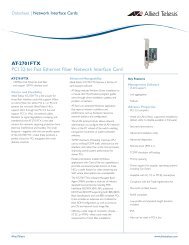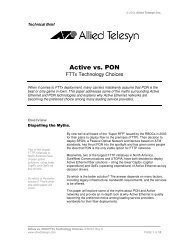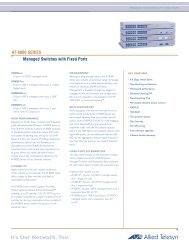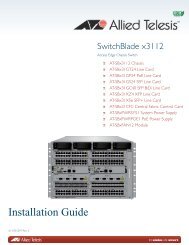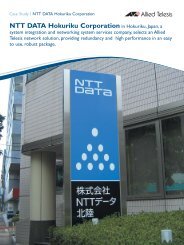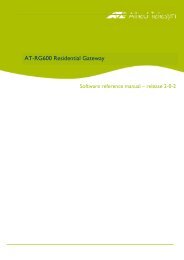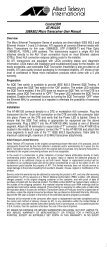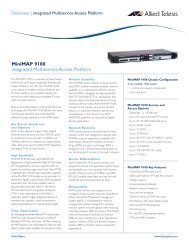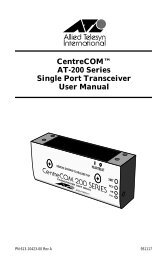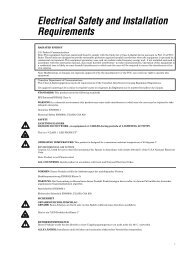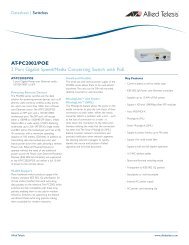SwitchBlade x3112 Installation Guide - Allied Telesis
SwitchBlade x3112 Installation Guide - Allied Telesis
SwitchBlade x3112 Installation Guide - Allied Telesis
You also want an ePaper? Increase the reach of your titles
YUMPU automatically turns print PDFs into web optimized ePapers that Google loves.
<strong>SwitchBlade</strong> <strong>x3112</strong> <strong>Installation</strong> <strong>Guide</strong><br />
Cabling the Twisted-Pair or Fiber Optic Ports<br />
Observe the following guidelines when connecting a twisted-pair or fiber<br />
optic cable to a port on the switch:<br />
<br />
<br />
<br />
<br />
<br />
The connector on the cable should fit snugly into the port on the<br />
switch. The tab on the connector should lock the connector into place.<br />
Because the twisted-pair ports on the switch are auto-MDI/MDI-X, any<br />
type of network device can be connected to a port on the switch using<br />
a straight-through twisted-pair cable. If you disable Auto-Negotiation<br />
on the port, the port defaults to MDI-X. For instructions on how to<br />
configure a port, refer to the Software Reference for <strong>SwitchBlade</strong><br />
x3100 Series Switches on the ATI web site for specific information.<br />
If your network topology contains a loop where two or more network<br />
devices can communicate with each other over more than one network<br />
path, do not connect the network cables forming the loop until after you<br />
have activated a spanning tree protocol on the switch. Data loops can<br />
adversely affect network performance.<br />
If you are creating a port trunk, you must configure the Switchblade<br />
<strong>x3112</strong> Management Software before connecting the cables of the trunk<br />
to the switch. Otherwise, a network loop will result which can adversely<br />
affect network performance.<br />
In order for a switch port to successfully Auto-Negotiate its duplex<br />
mode with an end node, the end node should also be using Auto-<br />
Negotiation. Otherwise, a duplex mode mismatch can occur. A switch<br />
port using Auto-Negotiation defaults to half-duplex if it detects that the<br />
end node is not using Auto-Negotiation. This can result in a mismatch<br />
if the end node is operating at a fixed duplex mode of full-duplex.<br />
To avoid this problem, disable Auto-Negotiation on a switch port and<br />
set the port’s speed and duplex mode manually if the end node has a<br />
fixed duplex mode of full-duplex.<br />
87



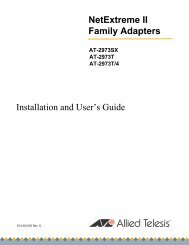
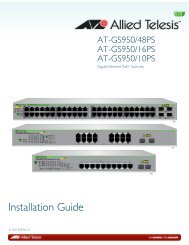
![AT-8100L/8POE-E [Rev B] - Allied Telesis](https://img.yumpu.com/25714603/1/190x245/at-8100l-8poe-e-rev-b-allied-telesis.jpg?quality=85)
